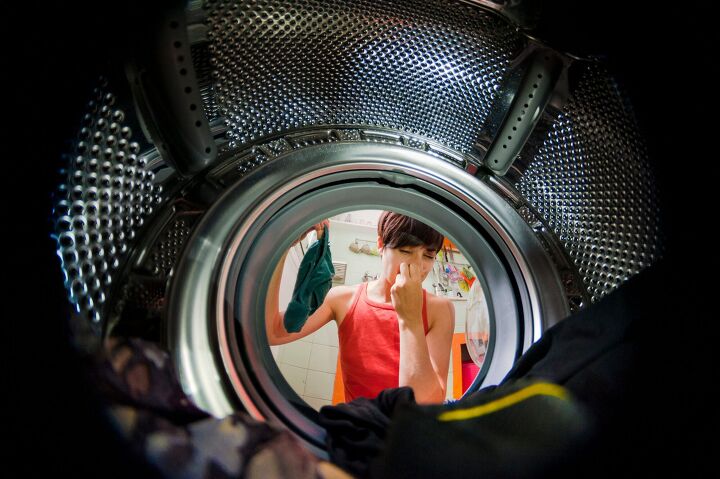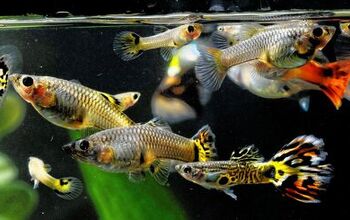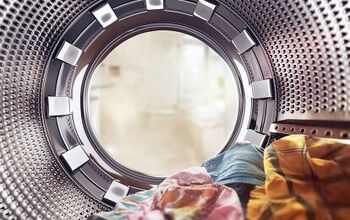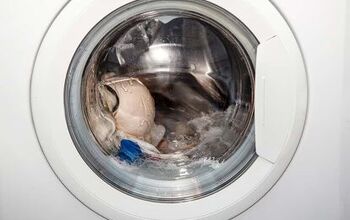Smell In Washing Machine? (Possible Causes & Fixes)
Don’t you just love the fragrant smell of clean laundry? It’s so nice to run a load, open the washer door and get hit with the aroma of fresh clothes. But what if you open your washer and get hit with a different smell? The musty, eggy kind that makes you want to run in the other direction? Many of us have been there, and it’s not fun.
Does your washing machine smell musty, like sewage or rotten eggs? You might be smelling mold or mildew caused by bacteria buildup in the drum or gasket. There is also a chance you have a plumbing issue or natural gas leak. Deep clean the washer’s drum, front-load gasket, and properly ventilate your machine to prevent bacteria growth.
Do You Need a Maid Service?
Get free, zero-commitment quotes from pro contractors near you.

Why Does My Washing Machine Smell?
Your washing machine suddenly smells rancid. But what exactly does it smell like? Is it a musty or rotten egg smell? Or more like the strong scent of sewage? The type of odor and where it’s coming from will help you identify the problem.
It’s probable the smell is caused by a buildup of soap scum and dirt trapped in your washer. Front-load washers tend to be most susceptible to this. The rubber gasket that seals the door easily traps dirt and sudsy products. A buildup of these produce mold bacteria, which emits a musty odor.
There’s also a chance the smell is coming from your sewer system or a natural gas leak. Again, this is a less likely scenario. But take it seriously, and keep your family away from the smell.
Let’s explore a few types of smells your washer might have, and what they could mean.
Rotten Egg or Musty Smell
There’s nothing worse than a rotten egg smell wafting from your laundry room. If this musty, sulfuric odor is what you’re picking up on, no need to panic. It’s probably built-up bacteria trapped in the seal or drum, or a natural gas leak.
Open up the door of the washer, and sniff around the rubber gasket and drum. Does the smell get stronger? There’s assuredly mold or mildew growing in the machine crevices. Microorganisms like bacteria will release a hydrogen sulfide gas that smells. You’ll probably need to do a deep clean of your washer to kill off the bacteria.
Is the smell wafting around the laundry room, but isn’t stronger inside the washer? You might have a gas leak on your hands. Natural gas is odorless, so sulfur is added in order to detect a gas leak. Call the gas company as soon as possible if you suspect this.
Sewer Smell
Does it smell like backed up sewage in your laundry room? Just like the rotten egg smell, it may be due to bacteria buildup in the machine. There may also be a plumbing issue related to your sewer system.
The best way to tell is by pulling the machine away from the wall. Pull the drainpipe out of the vertical standpipe and sniff for sewage. Is the smell stronger here? It’s probably a plumbing issue causing sewer gas to enter your laundry room.
Sewer gas is flammable and damaging to your health. As such, it should be taken seriously. A sewage or plumbing system problem could be caused by one of three things:
- Failing or clogged washer p-trap. P-traps are essential for preventing debris from getting into your sewage system. They also trap sewer gas from underground sewer pipes. Without a properly functioning p-trap, these gases will come into your laundry room.
- Clogged drain. Your washer’s vent pipe can get clogged with organic matter like hair, creating a smell.
- Clogged vent pipe. If the vent pipe gets clogged, the walls around it will emit a bad smell.
Consult a plumber if you suspect the sewage smell is coming from the pipes or your plumbing system. The smell may be symptomatic of a much larger issue going on.
How to Get Rid of Smell in Washing Machine
So how can you get rid of the nasty smell in your washing machine? The best way is to deep clean the detergent drawer, rubber gasket, and washer drum. Do this after you’ve ruled out the possibility of a sewage or plumbing problem.
Then make sure to properly ventilate your washer to prevent further bacteria buildup. This method takes some elbow grease, but it’s the best way to protect your clothes and your nose from the smelly washer horrors.
Follow these steps to deep clean your washing machine and prevent it from future smells.
Step One: Clean the Detergent Drawer
Detergent and softener drawers are soap scum traps. Their small compartments hold old detergent which can lead to bacterial growth. When cleaning your washer, the detergent drawer is the first place you should start. Here’s how to do it:
- Fill a spray bottle with white vinegar.
- Spray down the drawer, and let it sit for 20 minutes.
- Scrub down the drawer with a toothbrush. Get all the crevices.
- Wipe it down with a cloth.
- If the drawer detaches, soak it in a water and vinegar bath for 20 minutes.
Step Two: Clean the Rubber Gasket
The rubber gasket that seals the door on front load washers is often the biggest smelly perpetrator. The folds can trap in soap, dirt, and even small clothing items. The humidity mixed with a tight space is the perfect breeding ground for mold and mildew growth.
To clean the rubber gasket, follow these steps:
- Open the washer door.
- Peel back the folds of the gasket and remove any objects, like socks or coins.
- Fill a spray bottle with warm water and white vinegar.
- Spray down the entire gasket surface with the vinegar solution. Let sit for 10 minutes.
- Thoroughly wipe down the gasket with a rag.
- Scrub off any mold with a toothbrush dipped in a diluted bleach solution.
Step Three: Clean the Drum
The last component of your washer to clean is the drum itself. Keep in mind, some washers have a Clean Cycle, which will clean out the drum for you. Check to see if yours has this option. If not, you’ll have to do it manually.
- Empty everything from the drum.
- Pour half a cup of baking soda inside the drum.
- Add a cup of white vinegar into the detergent drawer.
- Run your washer on a hot water cycle.
Step Four: Ventilate the Washing Machine
Part of the reason washing machines grow mold and mildew is a lack of proper ventilation. After you deep clean your entire washer, leave the door open so it can air out. Also increase airflow to your laundry room space if possible.
- Leave your washer door open after washing a load.
- Remove your laundry immediately after the cycle is finished.
- Leave your laundry room door open.
- Ventilate for 1-2 hours after washing a load by keeping all doors and windows open.
Preventing Future Smells from Your Washing Machine
Thankfully there are steps you can take to prevent your washer from getting smelly. It requires more prep and maintenance, but clean clothes and your health are worth it. Here are some tips to prevent your washer from smelling bad:
- Clean your washer once a month. For the best results, you’ll want to clean the gasket, drum, and detergent tray regularly. Every square inch doesn’t have to be sparkling. But a little monthly cleaning goes a long way to prevent bacteria buildup.
- Keep the washer door open after use. Leave the washer door ajar after doing laundry so the drum can properly dry.
- Remove your laundry as soon as the cycle is finished. Don’t leave your wet clothes sitting for too long in the drum. This contributes to stagnant moisture.
- Increase airflow in the laundry room. Ensure your laundry room is ventilated. Open windows and doors, or even place a fan or dehumidifier in the room for added circulation.
- Replace laundry detergents with HE detergents. Do you have a high-efficiency washer? You might be using the wrong detergents. You should be using HE detergents, as these are far less sudsy and create less soap scum.
Do You Need a Maid Service?
Get free, zero-commitment quotes from pro contractors near you.

Related Questions
Where is the washing machine drain?
The washing machine drain pipe is typically found on the back of your washer. Coming from the bottom, it snakes up to connect with the standpipe. The drain pipe carries wastewater out of the washer. Beside the drain pipe, there is also a hot water and a cold water pipe. These are used to bring in freshwater.
What is a front load washing machine?
A front-load washing machine is a washer with a door on the front. Pulling the door out, the drum lies horizontal and laundry is loaded from the front. This is different than top load washers, which have the door on top. These are loaded from the top by dropping the laundry down into the drum. Front-load washers are semi-automatic, button-operated, more efficient, and more costly.
What is Affresh Washing Machine Cleaner?
Affresh washing machine cleaner is a cleaner that comes in tablet form. It is placed in the washer drum and run using a regular cycle setting. The tablet dissolves and penetrates residue that causes odors. Affresh cleaner is safe for your septic tank, HE washers, front load, and top load washers.
More by Jessica Vaillancourt






















![12 Washing Machine Brands to Avoid [with Recall Data]](https://cdn-fastly.upgradedhome.com/media/2023/07/31/9075781/12-washing-machine-brands-to-avoid-with-recall-data.jpg?size=350x220)




